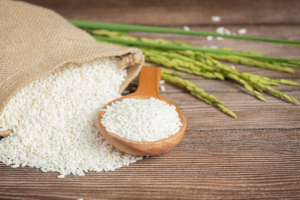Rice Summary, the staple food for more than half of the world’s population, is a grain with an extraordinary global impact. This humble yet vital crop has played a central role in shaping cultures, economies, and diets for millennia. From the terraced rice fields of Asia to the vast paddies of the Americas, rice has left an indelible mark on the agricultural landscape. Read More Class 12 English Summaries.
Rice About the translator:
Prof. K. Ayyappa Paniker (1930-2006) is a poet, literary critic, an academic and a famous scholar. He is pioneer of modernism in Malayalam poetry and his book “Kurukshetram” is a turning point. He taught English in various colleges and universities. He retired as Director, Institute of English, University of Kerala.
Rice Summary
Stanza 1: After four years of research in North India, I return home. I have received a doctoral degree. I also received a lot of praise for my work on making toys with husk. I am bored with eating chapatti every day and now I want to eat a meal of athikira rice (a variety of rice popular in central Kerala).
Stanza 2: When I get back home, it will be the planting season. My father is in the fields below our house. He is wearing a hand loom dhoti stained with yellow mud. He is excited about the water of the Varanganal canal. He will greet me amidst the shouts of ploughing with several oxen.

Stanza 3: The oxen will stop when they see me walking with my suitcase. There is a smile coming to my father’s lips and he does not show it. From the field itself he asks me when I started my journey from there.
Stanza 4: My little brother is carrying the tender saplings to be planted where the ploughing is done. When he sees me he will run and shout so that the people at home can hear him, saying “Mother, brother has arrived.”
Stanza 5: I walk carefully along the dyke so that I don’t upset the baskets kept there. They are full of seed. At last I reach home. Mother has drained the well-cooked rice.
I tell the train to run faster so that I can get home quickly and eat to my satisfaction.
II (Page 116)
Stanza 6: The bus stops on the road close to my house. When I left the place palm-thatched houses could be seen in the distance on the right side. But now there is nothing. There are only trees. The place has changed completely.
Stanza 7: All around me I see rows of rubber plants on the ridge. They have grown twice my height. I used to see modan and vellaran (varieties of paddy) here. I am confused even about the path leading to my home.
Stanza 8: There is no noise of people below. No shouts of ploughing. The whole field is planted with areca nut palms. In the corner, along the canal, there are the dealwood (wood that is soft and easy to saw, usually used for making packing cases and boxes) trees.
Stanza 9: I get into the house. On the southern side, my father is watching workers fixing up the machine for making rubber sheets. He looks happy and contented.
Stanza 10: My father tells with some pride that he has stopped producing rice. It was quite inconvenient. The farmer gained nothing. Only fools will try rice-farming for any gain. Rubber money is better. Good times have come. The government gives rice to those who don’t have paddy fields.
Stanza 11: My small brother runs to meet me. I am eager to eat a full meal of athikira rice. He is carrying the rations for the entire household. He trips over something and scatters the wheat all over the yard.
Stanza 12: A plane is flying above us. It is going north. The noise of the plane drowns my brother’s loud cries. The Chief Minister is flying to the Centre to get more grains. He is flying above the cash crops which are now growing like trees. No one promotes the farming of rice here.
Stanza 13: Can we get some husk from the Centre to make toys? I don’t know.
Conclusion :
In conclusion, rice’s significance extends far beyond the confines of a simple grain- it is a symbol of sustenance, culture, and resilience. Throughout history, rice has been the cornerstone of civilizations, a source of sustenance for billions, and a catalyst for agricultural innovation. It has adapted to diverse ecosystems and climates, showcasing the indomitable spirit of human agriculture.
